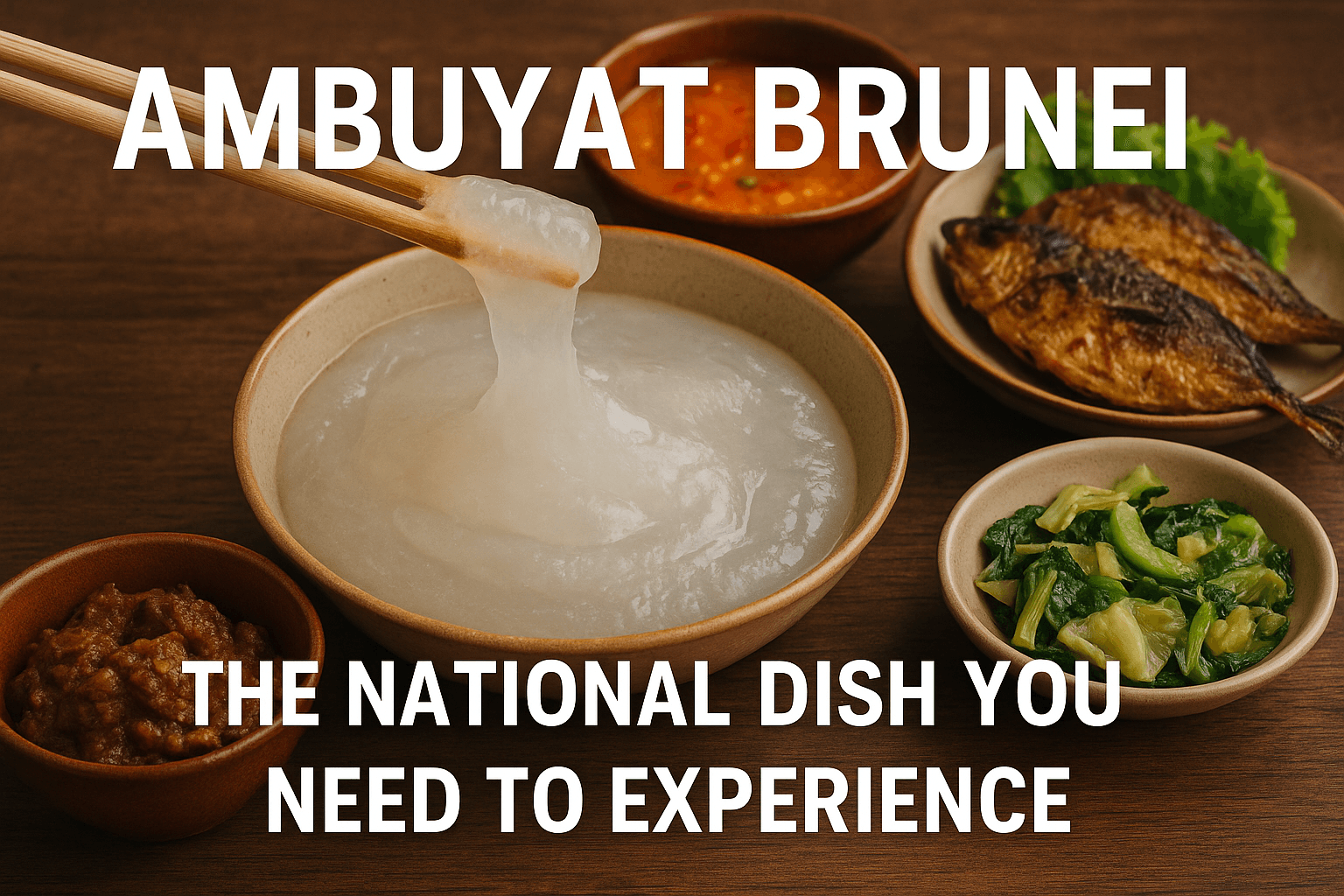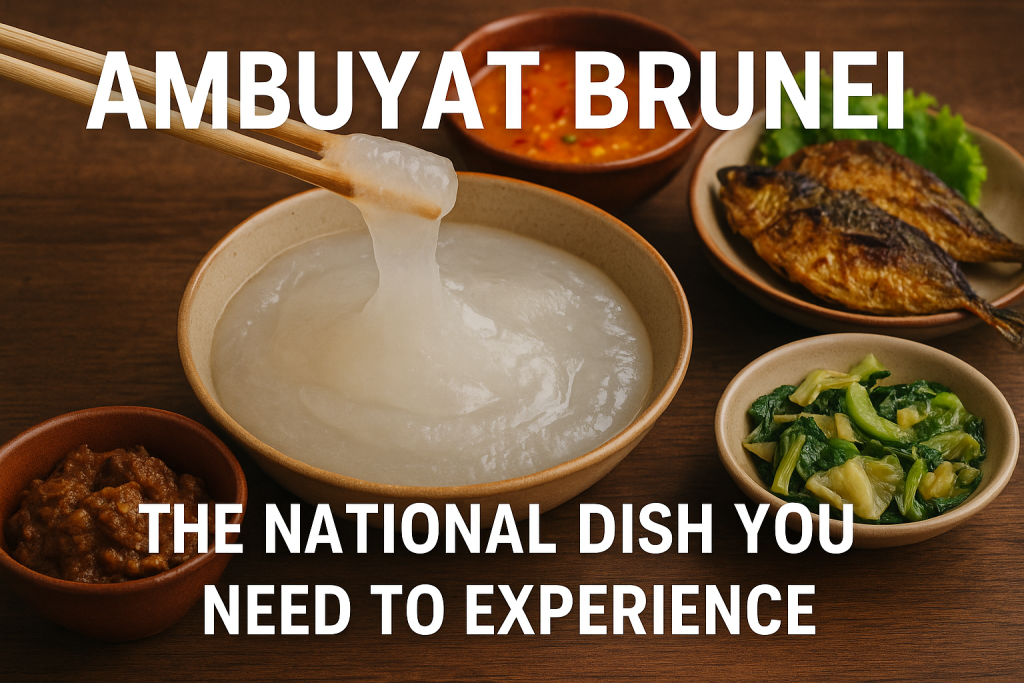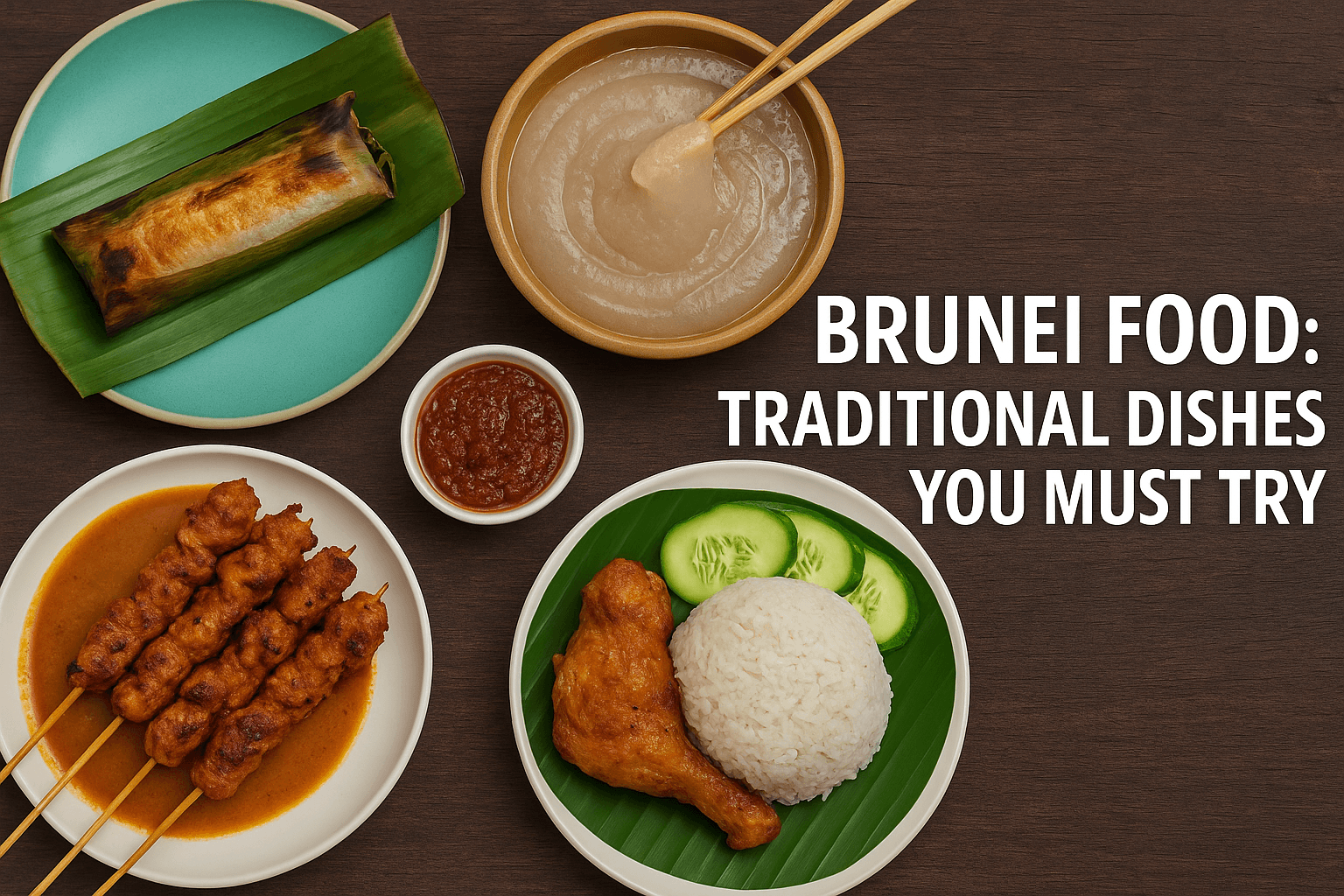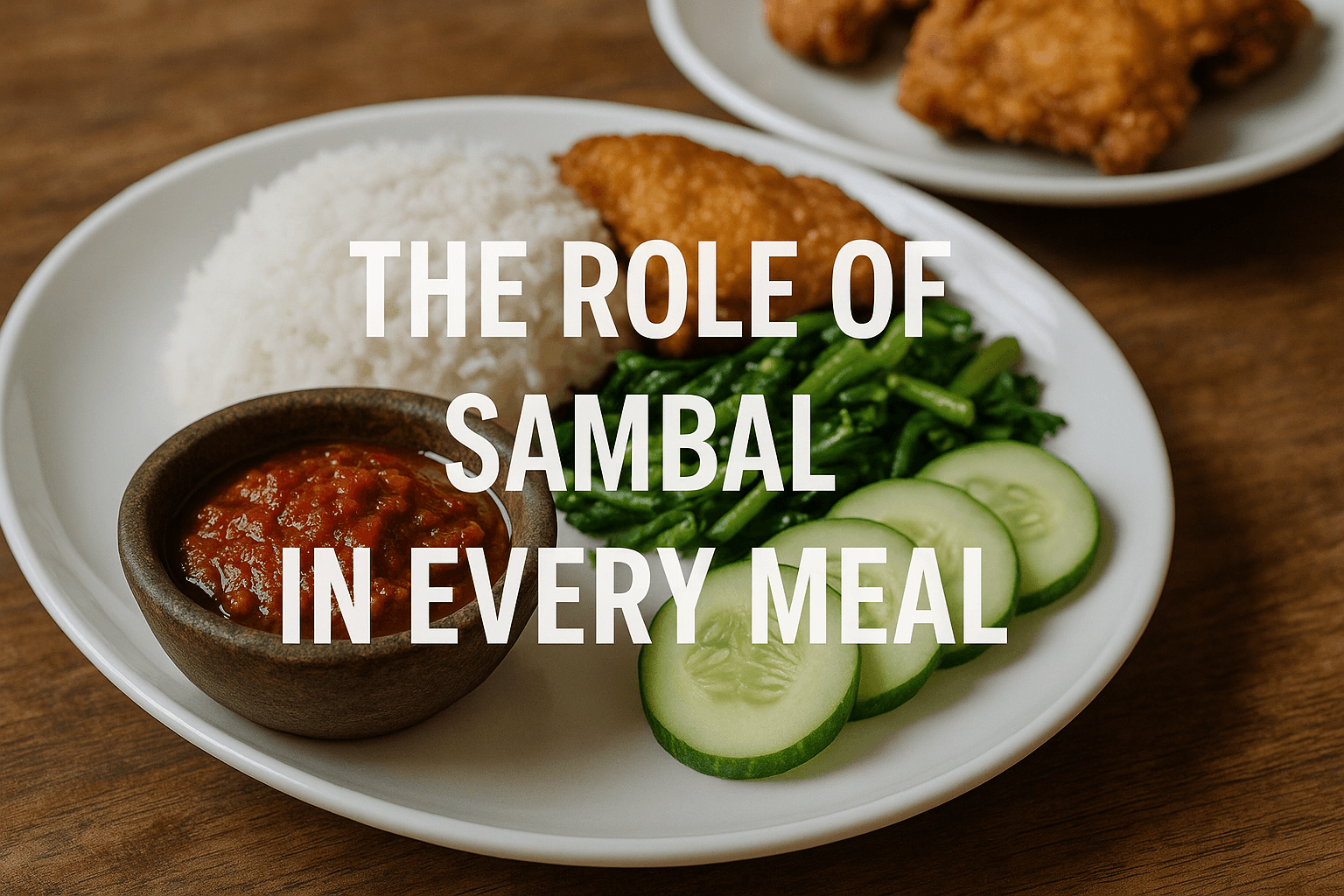When exploring the rich tapestry of Southeast Asian cuisine, there are countless dishes that showcase the region’s cultural depth, history, and local pride. Among them, Ambuyat Brunei holds a very special position. Known as the national dish of Brunei, Ambuyat is not just food, but an embodiment of heritage, community, and cultural pride. Its unique texture, cooking traditions, and ceremonial dining experience make it unlike any other meal you will encounter.
In this comprehensive guide, we will dive deep into the origins, preparation, serving customs, cultural significance, health benefits, and global appreciation of Ambuyat Brunei. Whether you are a passionate traveler, food enthusiast, or someone exploring the culinary traditions of Southeast Asia, this article will give you the knowledge and inspiration to appreciate this national treasure.

Historical Roots of Ambuyat
Ambuyat Brunei traces its history back hundreds of years. The dish originated as a survival food during times of scarcity, when Bruneian people relied heavily on sago starch extracted from the trunk of the rumbia palm tree. What started as a necessity gradually transformed into a cherished cultural dish that represents resilience and identity.
The use of sago was common among indigenous groups throughout Borneo, but in Brunei, it evolved into a refined dining practice. Over time, Ambuyat became associated with royal banquets, community gatherings, and festive occasions, ensuring its status as a national symbol.
The Core Ingredient: Sago Starch
At the heart of Ambuyat Brunei lies sago starch, a white, powdery substance derived from the rumbia palm. The process of extracting sago is labor-intensive, requiring the trunk to be cut, ground, and washed to separate the starch. Once dried, the starch can be stored for long periods, making it an essential survival food in the past.
When hot water is mixed with the sago starch, it transforms into a sticky, glue-like consistency that is smooth and elastic. This unique texture is what defines Ambuyat, making it distinct from rice, noodles, or bread, which are common staples in other parts of Asia.
Traditional Preparation of Ambuyat
Preparing Ambuyat Brunei is as much an art as it is a tradition. The process begins with boiling water until it reaches a rolling boil. Then, sago starch is carefully added and stirred vigorously until it thickens into a translucent paste.
Unlike dishes with bold spices added during cooking, Ambuyat itself is bland. The flavor comes from the accompanying dips and side dishes, which are essential to the overall dining experience. Families often prepare a wide selection of dips ranging from tangy to spicy, ensuring that every bite is full of variety.
Tools of Tradition: The Chandas
One cannot speak of Ambuyat Brunei without mentioning the “chandas.” These are traditional bamboo sticks used to roll and twirl the sticky Ambuyat before dipping it into flavorful sauces. Using chandas requires skill, and in many Bruneian households, learning how to handle them is considered a rite of passage.
The act of rolling Ambuyat with chandas is more than functional; it reflects cultural identity. Guests are often taught this technique when introduced to Ambuyat, making it a shared moment of cultural exchange.
Flavorful Accompaniments
Since Ambuyat itself is neutral in taste, its magic lies in the condiments and side dishes that accompany it. The most popular dip is “cacah,” a sour and spicy sauce made with lime, chili, and shrimp paste. Some households prepare multiple dips, including fermented mango sauce, chili paste, or coconut-based condiments.
Alongside Ambuyat, locals often serve grilled fish, beef rendang, or vegetable stews, creating a balanced and flavorful meal. Together, these accompaniments elevate the simple starch into a feast that delights the senses.
Ambuyat in Bruneian Culture
For Bruneians, Ambuyat Brunei is not just a dish—it is an identity marker. It is a reminder of resilience, a symbol of unity, and an expression of national pride. Families gather around communal tables to enjoy Ambuyat during celebrations, weddings, and national holidays.
The dish also reflects Bruneian values of togetherness. Eating Ambuyat is not a solitary act; it is always shared. This communal aspect strengthens bonds among families, friends, and communities.
Ambuyat in Modern Times
In modern Brunei, Ambuyat Brunei has transitioned from a survival food to a delicacy proudly served in both households and restaurants. Upscale dining venues feature Ambuyat as a cultural attraction for tourists, while street vendors offer more casual versions for locals.
You will often find Ambuyat promoted during Brunei’s National Day celebrations, cultural festivals, and food fairs. It has become an ambassador of Bruneian cuisine, drawing attention from international food lovers eager to explore authentic experiences.
Health Benefits of Ambuyat
While Ambuyat Brunei is mainly starch-based, it does offer certain health benefits. Sago is naturally gluten-free, making it suitable for individuals with gluten sensitivities. Its bland taste makes it easy to pair with nutrient-rich dips and side dishes, ensuring a balanced diet when consumed as part of a larger meal.
Additionally, Ambuyat is easy to digest, making it a gentle option for people with digestive issues. Its high carbohydrate content provides energy, which is why it has remained a staple food for generations.
Comparison with Regional Dishes
Ambuyat Brunei shares similarities with dishes across Southeast Asia. In Sabah and Sarawak (Malaysia), a similar dish made from sago is called linut. In Indonesia, Papeda, a sago-based porridge from Papua and Maluku, mirrors Ambuyat in texture and preparation.
Despite these similarities, Ambuyat is unique in its cultural framing, ceremonial dining tools, and role as a national dish. This distinction sets it apart as more than just food—it is a cultural statement.
Ambuyat as a Tourist Attraction
Brunei is increasingly promoting Ambuyat Brunei as part of its tourism campaigns. Food tours often include Ambuyat dining experiences, allowing visitors to learn not only how it tastes but also the etiquette surrounding it.
Restaurants highlight Ambuyat as a must-try dish, while cultural centers showcase cooking demonstrations. This cultural diplomacy has helped Brunei strengthen its image as a nation proud of its traditions.
Culinary Etiquette
Eating Ambuyat Brunei is more than dipping and tasting—it is about respecting tradition. When handling chandas, one must roll the Ambuyat neatly before dipping into the cacah. Guests are expected to share dips politely, ensuring everyone has a chance to enjoy the condiments.
This etiquette teaches patience, sharing, and appreciation for cultural values. It transforms dining into a mindful practice that goes beyond physical nourishment.
Ambuyat in Celebrations
From weddings to official ceremonies, Ambuyat Brunei plays a central role. It is served in large communal bowls, surrounded by a variety of dips and grilled meats. During Ramadan, many families break their fast with Ambuyat, combining tradition with religious practice.
In national celebrations, Ambuyat symbolizes unity, linking the past with the present and bridging communities through shared meals.
Ambuyat and Globalization
As globalization influences diets worldwide, Ambuyat Brunei continues to stand firm as a symbol of national heritage. While Bruneians enjoy modern foods like fast food and international cuisines, Ambuyat remains an anchor to tradition.
Chefs have begun experimenting by integrating Ambuyat with modern presentations, such as pairing it with fusion dips or incorporating it into fine dining menus. This ensures that while traditions remain intact, Ambuyat can evolve with changing times.
Sustainability of Sago
Sago, the backbone of Ambuyat Brunei, is an environmentally sustainable crop. Rumbia palms grow abundantly in swampy areas, requiring minimal chemical intervention. Promoting sago farming not only sustains cultural traditions but also supports ecological balance.
By continuing to embrace Ambuyat, Brunei contributes to preserving biodiversity and encouraging sustainable food sources.
Ambuyat in Media and Literature
Bruneian media often highlights Ambuyat Brunei in documentaries, cookbooks, and cultural features. Writers and chefs emphasize its symbolic role in shaping Bruneian identity. International food bloggers also spotlight Ambuyat, introducing global audiences to its uniqueness.
This exposure has elevated Ambuyat’s status beyond borders, ensuring it is recognized as an important cultural heritage.
Conclusion
Ambuyat Brunei is more than just a dish; it is a living tradition, a cultural identity, and a symbol of resilience. Its unique texture, communal dining experience, and symbolic value make it an unforgettable culinary journey. Whether enjoyed at a family gathering, a local restaurant, or as part of a cultural tour, Ambuyat invites everyone to taste Brunei’s heritage.
By embracing this national treasure, we not only experience the flavors of Brunei but also connect with the spirit of togetherness and tradition that defines this remarkable nation.



